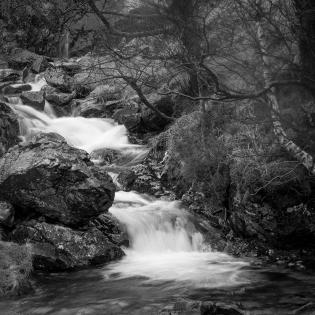Watershed S.O.S.
What can we do to promote responsible use of all resources?
Photo Credit: ‘Rushing Water’ – Nant Ffrancon, Snowdonia, Wales by Adrian Kingsley-Hughes is licensed under CC by 2.0
Understanding the watershed and its potential threats engages young people in critical thinking about their responsibility for direct action or advocacy.
Through observation of the water cycle, we discuss the importance of water as a nonrenewable resource. Why is being a good steward of this resource an example of acting for the Common Good?
The purpose of the lesson is to educate learners about watersheds, ways in which water pollution occurs, and how important proper use of watersheds is to them. After understanding the importance of the watersheds, they will recognize that wise usage of their local watershed is an example of stewardship.
In this lesson, participants join a playful group called Poseidon's Protectors who are sworn to protect the watershed and oceans. They write a letter to Poseidon telling about their 3-part plan to protect.
